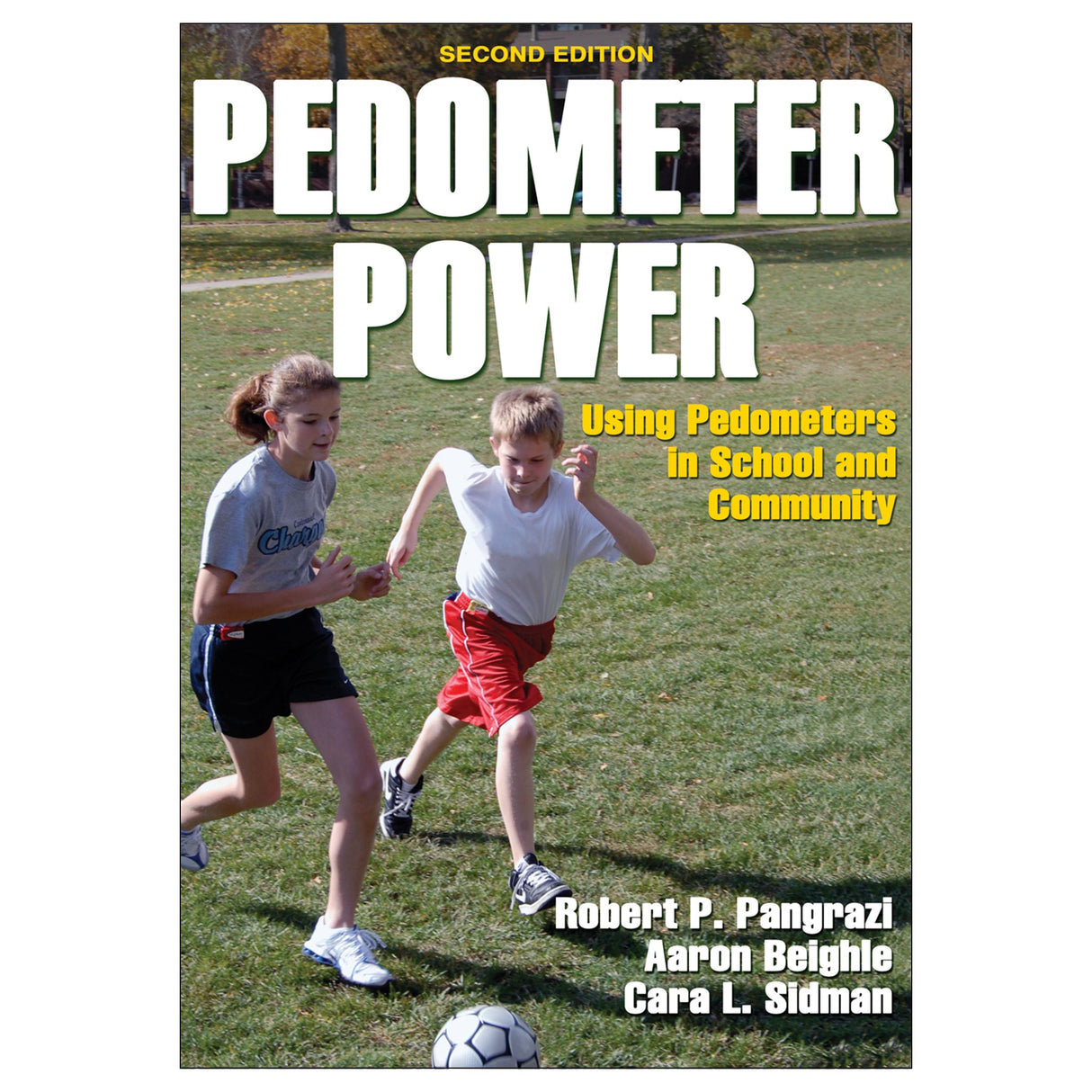Pedometer Power-2nd Edition
Using Pedometers in School and Community
$12.00 CAD
With Pedometer Power: Using Pedometers in School and Community, you can
-use 65 pedometer-based activities for children and adults at home and in physical education, recreation, and after-school settings;
-promote physical activity—and your program—to parents and the larger community with take-home and special-event activities; and
-help participants learn about the importance of duration and intensity of physical activity and about the value of maintaining an active lifestyle.
The best-selling Pedometer Power is back—updated and expanded with 65 thoroughly field-tested and exciting pedometer activities to motivate participants to become more physically active.
This edition includes new and improved activities, more activities for high school and college students, an emphasis on using pedometers both in school and community settings, and updated data that clearly support the effectiveness of pedometers in monitoring physical activity.
You can use Pedometer Power in a variety of settings, including physical education classes from kindergarten though college, after-school programs, recreation programs, and health-promotion programs. In doing so, you can accomplish these objectives:
-Provide tips, strategies, and activities that have been refined by years of development and testing by one of the leading physical education research teams.
-Ensure that students and participants will be successful and find the activities fun and motivating.
-Help students and participants accurately gauge both the length and intensity of their activity.
-Teach, promote, and assess physical activity, based on the cutting-edge research of the authors.
-Motivate students and participants about the value of mainaining an active lifestyle.
Pedometer Power provides information on how to use and store the devices, minimize breakage and loss, record and store data, promote physical activity, raise funds, and involve parents, teachers, and administrators. You'll also find fresh, ready-to-use ideas accompanied by diagrams, photos, and time-saving record sheets for students and participants. In short, Pedometer Power contains everything you need to start and manage an ongoing pedometer program.
Audience
Reference for K-12 physical education teachers and for leaders of K-12 after-school and recreation programs.
Preface
Chapter 1. Promoting Lifestyle Physical Activity
From Fitness to Physical Activity
From Intensity to Volume
How Much Physical Activity Is Enough?
Final Thoughts
If You Want to Know More . . .
References
Chapter 2. Funding, Purchasing, and Managing Pedometers
Funding
Purchasing
Managing
Final Thoughts
If You Want to Know More . . .
References
Chapter 3. Using Pedometers in Physical Education
Introducing Pedometers to Students
Improving Instruction With Pedometer Data
Implementing Teaching Strategies to Increase Physical Activity
Final Thoughts
If You Want to Know More . . .
References
Chapter 4. Using Pedometers to Teach Self-Management Skills
Self-Efficacy and Motivation
Pedometers and Goal Setting
Setting Individual Activity Goals
Creating Cooperative Class Goals
Setting Step Goals for Discretionary-Time Activity
Calculating Stride Length
Converting Steps to Mileage
Integrating Self-Management Skills
Writing Prompts for Classroom Teachers
Final Thoughts
If You Want to Know More . . .
References
Chapter 5. Activities for Elementary School Students
Learning About Steps and Activity Time
10 Steps
Estimating Steps and Time
Guess and Check
No Steps
Design a Route
Graphing Step Counts
Understanding Individual Differences
Pedometer Orienteering
Pedometer Frisbee Golf
Other Golf Activities
Pedometer Scavenger Hunt
Pedometer Sports Activities
Moving Across the Country
Pedometer-Enhanced Relays
Extracurricular Activities
Physical Activity Clubs
PAC Charity Walk and Jog
PAC Family Fun Day
PAC Moving Across the Country
Active Intramurals
Schoolwide Pedometer Step Contest
Final Thoughts
If You Want to Know More . . .
Chapter 6. Activities for Secondary School and College Students
Student-Modified Activities Based on Pedometer Steps
Student-Developed Activities
Student-Designed Pedometer Orienteering Course
Activity Exploration
Peer Teaching
Physical Education Activities
Establishing Baseline Step Counts for Daily Physical Activity
Pedometer Goal Setting
Goal-Setting Menu
Individual Intervention Programs
Hypothesis Testing With Pedometers
Learning About the Activity Guidelines
Pedometer Activities for College Students
Pedometers 101
Active vs. Inactive Day
Guess and Walk
Awareness Activities
Interview
The Popular 10,000-Step Goal
Rain or Shine?
30 Minutes
Pedometer Thoughts
Physical Activity and Culture
Wellness Activity
Final Thoughts
If You Want to Know More . . .
References
Chapter 7. Activities for Families and Communities
Physical Education Nights
Active Open House
Physical Activity Festival
Pass the Pedometer
Pedometer Chore Time
Errands With a Pedometer
Evaluating Physical Activities
Family Goals
Family Dance Night
Walk and Talk
Walk Around the Clock
Family Scavenger Hunt
Season Stepping
Active Samaritans
Adopt-a-Neighborhood Street
Behavior-Change Contract
Walk-to-School Day
Other Pedometer Activity Ideas
Final Thoughts
If You Want to Know More . . .
References
About the Authors





